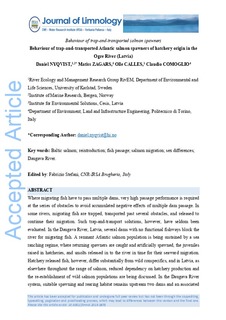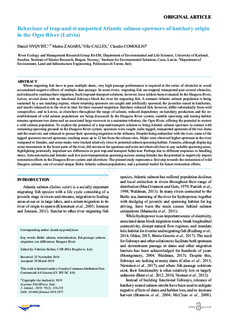| dc.description.abstract | Where migrating fish have to pass multiple dams, very high passage performance is required at the series of obstacles to avoid accumulated negative effects of multiple dam passage. In some rivers, migrating fish are trapped, transported past several obstacles, and released to continue their migration. Such trap-and-transport solutions, however, have seldom been evaluated. In the Daugava River, Latvia, several dams with no functional fishways block the river for migrating fish. A remnant Atlantic salmon population is being sustained by a sea ranching regime, where returning spawners are caught and artificially spawned, the juveniles raised in hatcheries, and smolts released in to the river in time for their seaward migration. Hatchery released fish, however, differ substantially from wild conspecifics, and in Latvia, as elsewhere throughout the range of salmon, reduced dependency on hatchery production and the re-establishment of wild salmon populations are being discussed. In the Daugava River system, suitable spawning and rearing habitat remains upstream two dams and an associated large reservoir in a mainstem tributary, the Ogre River, offering the potential to restore a wild salmon population. To explore the potential of a trap-and-transport solution to bring Atlantic salmon spawners in contact with remaining spawning grounds in the Daugava River system, spawners were caught, radio tagged, transported upstream of the two dams and the reservoir, and released to pursue their spawning migration in the tributary. Despite being unfamiliar with the river, some of the tagged spawners moved upstream, reaching areas up to 12 km from the release sites. Males were observed higher upstream in the river compared to females, and some males were tracked relatively close to potential salmon spawning habitat. Females, although displaying some movements in the lower parts of the river, were not observed close to any suitable spawning areas, highlighting potentially important sex differences in post trap-and-transport behaviour. Perhaps due to different responses to handling stress, such low post-transportation spawning success among females has the potential to negatively impact restoration efforts in the Daugava River system and elsewhere. The present study represents a first step towards the restoration of wild Daugava salmon, one of several unique Baltic Atlantic salmon populations, and a potential model for future restoration efforts. | nb_NO |

